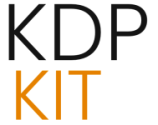Navigating KDP Account Suspensions: A Comprehensive Guide for Authors (2025 Update)

The Kindle Direct Publishing (KDP) platform offers authors an unparalleled opportunity to reach a global audience. However, the dream of self-publishing can quickly turn into a nightmare if an account is suspended or terminated. As of August 20, 2025, Amazon continues to enforce its policies rigorously, making it crucial for authors to understand the reasons behind account actions and how to navigate the appeal process effectively.
Understanding KDP Account Status: Suspension vs. Termination
It’s vital to distinguish between a KDP account suspension and termination. A suspension is typically a temporary restriction, acting as a “yellow card,” where KDP expects authors to identify and rectify issues. During a suspension, publishing or editing may be restricted, but the account might remain accessible, and books could still be available for sale. A termination, on the other hand, is a permanent closure of the KDP account, resulting in the removal of all books from the Kindle store and often the permanent withholding of royalties, especially in cases of severe or repeated violations. This is akin to a “red card,” making reinstatement significantly more challenging.
Common Reasons for KDP Account Suspension and Termination
Amazon’s KDP platform enforces strict guidelines to ensure a quality customer experience, protect intellectual property, and maintain marketplace integrity. Violations, whether intentional or unintentional, can lead to account actions. The most frequent causes for suspension and termination in 2024-2025 include:
Metadata Violations
- Copyright and Trademark Infringement: Using copyrighted material, images, cover art, fonts, or trademarked names without proper authorization is a primary reason for account action. This includes unauthorized use of brand names, logos, or character names.
- Incorrect or Misleading Information: Failing to match the title and subtitle on your book cover with the information in your KDP dashboard, or providing inaccurate or deceptive details about your book, can lead to flags.
- Keyword Stuffing and Irrelevant Keywords: Overloading keywords or using terms that do not accurately describe the book’s content can be considered misleading metadata.
- Similar Titles and Covers: Amazon is increasingly cracking down on books with titles and covers that are identical or highly similar to existing publications, often driven by market trends or attempts at quick profits.
- AI-Generated Content Disclosure: As of 2025, KDP requires mandatory disclosure of AI-generated content in text, images, or translations. Failure to disclose can lead to account issues.
Content Issues
- Plagiarism and Duplicate Content: Publishing content that is copied from other sources without permission, or submitting books that are substantially similar to existing content on the Kindle store (including public domain material not significantly enhanced), is a serious violation.
- Low-Quality Content: Submitting books with poor formatting, numerous errors, or content that does not meet Amazon’s quality standards can result in customer complaints and account actions. This includes “no content” or “low content” books that don’t meet specific guidelines.
- Offensive or Prohibited Material: Publishing content that violates Amazon’s guidelines on hate speech, violence, explicit sexual content, or other prohibited themes can lead to suspension.
Account Violations
- Multiple Accounts: Operating more than one KDP account without Amazon’s explicit permission is a direct violation of terms of service.
- Manipulative Practices: Attempting to game the system through fake reviews, click farms, or other black hat tactics to artificially boost sales rank or manipulate reviews is strictly prohibited.
- Violating Exclusivity Agreements: If a book is enrolled in KDP Select, publishing it on other platforms during the enrollment period is a breach of agreement.
- Sharing Devices or IP Addresses: Amazon may flag accounts if they detect activity from shared devices or IP addresses, potentially assuming multiple accounts are being operated.
- Using Pre-Owned Devices: Logging into KDP from a used device that has previously been linked to a suspended account can also lead to account flagging.
Geographical Concerns
There is evidence suggesting that authors publishing from certain countries or regions may face increased scrutiny due to a higher incidence of problematic content originating from those areas.
Preventing KDP Account Suspension
Proactive measures are key to safeguarding your KDP account. By adhering to Amazon’s guidelines and maintaining best practices, authors can significantly reduce their risk of suspension:
- Thoroughly Read and Adhere to Guidelines: Familiarize yourself with Amazon’s KDP Terms and Conditions, Content Guidelines, and Metadata Style Guide.
- Ensure Metadata Accuracy: Double-check that your book’s title, subtitle, author name, keywords, and description accurately reflect the content and comply with Amazon’s policies. Avoid keyword stuffing and misleading claims.
- Maintain Original Content: Only publish your own work or content for which you have explicit rights. If using AI-generated content, ensure proper disclosure.
- Verify Copyrights and Licenses: Keep meticulous records of your copyrights, ISBNs, and any licenses for third-party content.
- Originality in Titles and Covers: Ensure your book titles and covers are unique and do not closely resemble existing publications to avoid metadata violation flags.
- Quality Control: Invest in professional editing and proofreading to ensure your book is free of errors and well-formatted.
- Be Cautious with Categories and Keywords: Choose categories and keywords that accurately represent your book’s content and avoid manipulative practices.
- Respect Exclusivity: If enrolled in KDP Select, do not publish your eBook elsewhere during the enrollment period.
- Secure Your Account: Use unique passwords, avoid sharing devices or IP addresses, and be mindful of using pre-owned devices.
- Monitor Communications: Regularly check the email associated with your KDP account for any notifications or warnings from Amazon and act promptly.
What to Do If Your KDP Account is Suspended or Terminated
Discovering your KDP account has been suspended or terminated can be distressing. However, a well-prepared appeal can often lead to reinstatement. Here’s a step-by-step approach:
Step 1: Understand the Violation
Carefully review the notification email from Amazon. Identify the specific reason(s) cited for the suspension or termination, noting any mentioned ASINs.
Step 2: Gather Evidence and Documentation
Collect all relevant documentation that supports your case. This may include:
- Proof of copyright registration or licensing agreements.
- Original manuscript source files with creation dates.
- Correspondence with editors, illustrators, or translators.
- Records of previous KDP warnings and your responses.
- Metadata records (titles, subtitles, keywords, descriptions) demonstrating compliance.
- Any relevant email correspondence with KDP.
Step 3: Craft a Compelling Plan of Action (POA)
Your Plan of Action (POA) is your formal response to Amazon. It should be clear, concise, professional, and take responsibility. Structure it into three sections:
- Root Cause Analysis: Clearly identify why the violation occurred. This is the most critical part.
- Corrective Actions: Detail the immediate steps you have taken to address the issue(s) mentioned in the suspension notice (e.g., removing or editing content, rectifying metadata).
- Preventative Measures: Outline the robust long-term strategies you will implement to ensure future compliance with KDP guidelines.
When addressing metadata violations, acknowledge the misleading elements, confirm corrections, and detail your new review process for all metadata before publishing.
Step 4: Submit Your Appeal
Submit your appeal through the channels specified by KDP, usually by replying directly to the suspension/termination email. Ensure your subject line is clear (e.g., “KDP Account Termination Appeal – Case #123456789”). Some authors have found success by also sending a copy to executive offices, though this should be a secondary step.
Step 5: Be Patient and Persistent
The review process can take time. Avoid sending multiple appeals unless requested. If your initial appeal is unsuccessful, consider refining your POA and resubmitting.
Step 6: Consider Professional Help
If your appeals are unsuccessful or the situation is complex, consider seeking assistance from Amazon account specialists or legal professionals experienced in KDP appeals.
Key Takeaways for KDP Authors
Amazon KDP account suspensions and terminations can be devastating, but understanding the causes and taking preventive measures can significantly reduce your risk. Remember, Amazon’s primary goal is to maintain a quality experience for readers. By focusing on creating and publishing high-quality, original content that adheres to their guidelines, you’ll be well-positioned for long-term success on the platform. Stay informed, stay vigilant, and keep writing!






